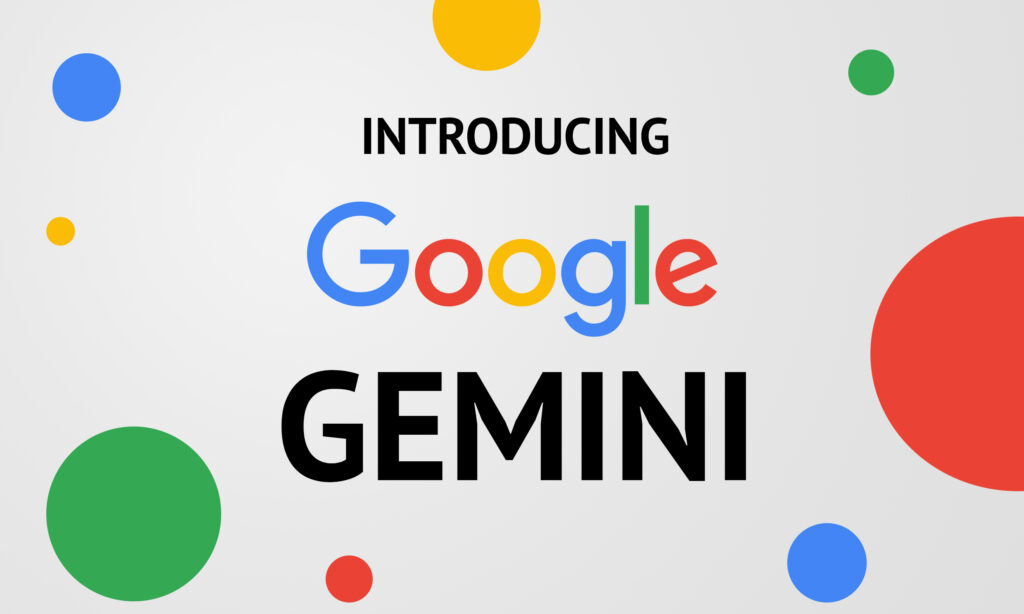Gemini: Google DeepMind’s Anticipated AI Model
Google’s eagerly awaited foundational model, Gemini, is on the cusp of its impending launch. In the realm of artificial intelligence, Demis Hassabis, a pivotal figure at Google DeepMind, revealed the strategic integration of techniques refined through AlphaGo’s accomplishments to shape Gemini. This infusion of expertise positions Gemini as a robust contender, unveiled to a curious audience during Google’s I/O event, igniting heightened anticipation. Hassabis is confident that Gemini will outshine OpenAI’s GPT-4.
Fusing AlphaGo Techniques with Language Prowess
Gemini represents an amalgamation of the prowess seen in AlphaGo-style systems and the remarkable language capabilities characteristic of large models. Hassabis alludes to impending breakthroughs in innovation.

Unified Efforts at Google DeepMind
Recent efforts have merged the independent Google Brain and DeepMind teams into a unified powerhouse known as Google DeepMind. This strategic move aims to synergize computational resources and meticulous research to fuel the next wave of advanced AI systems, setting the tone for a competitive race in the realm of AI.
Shifting Focus: From Competition to Collaboration
Google and DeepMind had previously charted separate courses in addressing the capabilities of ChatGPT. DeepMind introduced Project Goodall, while Google developed Bard based on Google Brain models. Despite historical rivalry, DeepMind redirected its efforts to collaborate on the development of Gemini, marking a notable shift in strategy.
Gemini: Bridging the Research-Commercialization Gap
In a marked departure from DeepMind’s earlier research-oriented models, Gemini holds the potential to break into the commercial realm. This signifies a noteworthy stride, potentially bringing about applications that extend beyond the realm of research.
Advancing Multimodal Capabilities
Although Gemini’s developmental phase is in its infancy, Google highlights significant progress in its ability to handle multimodal data, surpassing the capabilities of its predecessors. This architectural design prioritizes the fusion of multimodal processing with streamlined tools and API integrations. Moreover, it stands ready to embrace forthcoming innovations in memory and planning.
Beyond Text Generation: The Multimodal Promise
While GPT-4 excels in generating text-based content, Gemini stands at the threshold of revolutionizing AI capabilities through its adeptness in processing text, images, and videos. This prowess enables Gemini to create a spectrum of outputs encompassing text, videos, audio, music, and images.Notably, it exhibits advanced reasoning skills and the capability to facilitate seamless translations across languages and input formats.
Gemini’s Varied Potential Applications
Conversations within Google’s circles revolve around the myriad applications that Gemini could offer. From in-depth chart analysis to generating descriptive graphics, and even executing software through text or voice commands, the possibilities are broad.
Fueling Google Services: From Chatbots to Enterprise Platforms
Google is placing a strategic bet on Gemini to enhance its range of services. This includes applications like the Bard chatbot, positioned to compete with OpenAI’s ChatGPT and enterprise-centric platforms like Google Docs and Slides. Google envisions monetizing Gemini’s access via its Google Cloud server-rental division, a move aimed at narrowing the gap with Microsoft’s integration of AI features into Office 365.
Medical Frontiers and Robotics Innovations
Google has been proactive in exploring medical applications for its AI models. Notably, it has been experimenting with Med-PaLM 2, an AI tool for medical questions, in collaboration with esteemed healthcare institutions like the Mayo Clinic research hospital. Gemini’s arrival could amplify these efforts, potentially contributing to medical chatbots and even assisting in medical procedures.
Robust Robotics Advancements
Insights gained from DeepMind’s Gato and the recent launch of RT-2, a successor to its Robotics Transformer model, might shape Google’s trajectory in robotics.RT-2, constructed upon the foundation of the Transformer architecture and honed through training on web text and images, holds the purpose of directly generating robotic actions. This synergy resonates with Gato’s versatile capabilities, wherein a task-oriented diversity materializes through a transformer neural network and an amalgamation of data modalities encompassing text, images, and actions.
Emergence of a Potential Contender: Impact on the AI Landscape
The collaborative efforts between Google Brain and DeepMind are poised to create challenges for OpenAI and other competitors. The involvement of notable figures, including former Google president Sergey Brin, speaks to the concerted effort to fortify Google’s AI capabilities.
Unique Edge: Training on YouTube Videos
Gemini’s training on YouTube videos, leveraging the immense repository of content on the platform, positions it uniquely. This sets it apart from GPT-4, which relies solely on text and images. This strategic move could grant Gemini a substantial advantage, particularly considering Google’s evolving privacy policies.
Amplified Capabilities and Competitive Edge
Reports suggest that Gemini’s training incorporates twice the number of tokens as GPT-4, boosting its capabilities and reducing the likelihood of generating erroneous outputs. This, coupled with the ongoing friction between OpenAI and Microsoft, positions Google to potentially outpace its competitors in reaching AGI or AGI-like models.
Also Read: Google Bard: All You Need To Know About It.





